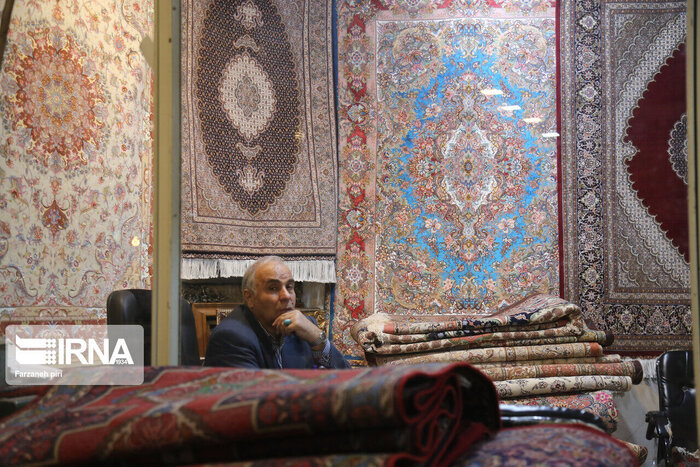Persian carpet is a symbol of Iranian garden, which has pools, streams, trees, flowers and walls that surround the garden.

Iranian garden illustrates heaven and the Persian carpets are inspired by the Iranian gardens. It is said that paradises are the big and ancient Iranian gardens, which consisted of seven walls, where enemies could not enter the fortified areas.
The seven walls are the carpet border designs. One of the walls is wider than the sixth others. The border design is decorated with different kinds of animals and plants. The streams on the four corners of the garden are being illustrated in the Persian carpet as the most internal border of it, which is a stream stemming from the central pool and the main rivers.
The design of the garden carpet was called “Golestan” or “Golzar” during the Safavid dynasty.
According to carpet researcher Ali Hozuri, the Golestan design dates back to the second millennium BC, and there are only 20 ancient garden design carpets around the world.
Many Persian carpet designs are considered as the Golestan design, including “Lachak” and “Toranj,” which have their roots in Golestan design.
During the Safavid era, the art of carpet weaving had been given importance; so, the art could be upgraded and some carpet weaving workshops were founded in Kashan, Isfahan and Tabriz. Numerous carpets were weaved to be used in palaces or to be gifted to other countries.
Bijan Arbabi, a university professor and researcher of the impact of the Iranian garden on a Persian carpet, underlined that the Iranian garden has been illustrated in Persian carpets directly and indirectly, and that garden is a cultural phenomenon, which has been demonstrated both in carpet and other traditional arts.
The academic is of the opinion that the Iranian artists’ attention to Concepts of aesthetics helped the art of Persian carpet weaving become one of the best handwoven carpets throughout the globe.
Mehdi Ebrahimi, a professor at the Art University of Isfahan, said carpets woven in Isfahan province focus on flowers and designs left behind from the Safavid era, adding that the color and design of Isfahan carpets have not changed over time.











